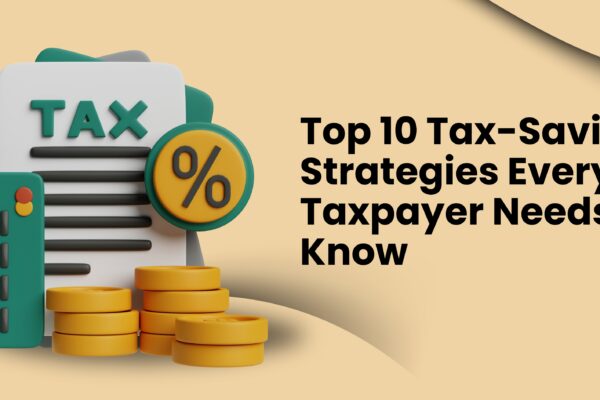Impact of India’s GST model on retail trade by CA Rashmi Jain
Impact of India’s GST model on retail trade
While there is no structured study undertaken with the relevant data that is known to My Take; an attempt is made in this note to understand and appreciate the impact of India’s GST model on retail trade.
1. Input Tax Credit is as restrictive as in the present indirect tax laws, both State and the Central and will be available to the retailers only of those goods that fall within the specified chapters of Model GSTL. The serious question to be appreciated is that the retailers will have to establish the correlation or the nexus of goods and services received with their outward supplies of such goods and services; though not specifically written in the law. The reconciliation of inwards and outward supplies; the mismatch principle and the interdependence of the recipient on the suppliers shall prove to be too difficult for the retailers situated across India. Of course for importers such issues will not arise as they themselves shall pay IGST on imports and claim set off. This provision places the liability for non-compliance on the recipients of supplies of goods and/or services rather than on the suppliers. Tricky situation and My Take expects a lot of commercial litigation happening and the recipients may get black mailed by suppliers. My Take suggests that in case of such deficiency not rectified by the suppliers after notice from the GSTN; the bank account of the supplier should be debited automatically and the credit of the amount so debited should be given to the recipient provisionally subject to settlement between the two parties within a time bound mechanism. May be an interest provision may be created wherein the recipient shall pay interest to the supplier should the recipient lose. Similar provisions have been prescribed wherein details of credit notes issued by a supplier have to match with the corresponding reduction of Input Tax Credit claimed by the recipient. Accordingly, if the recipient does not adjust the Input Tax Credit, the tax and interest would be recovered from the supplier. This provision places the liability on the suppliers for non-compliance by their retailers, distributors or stockists.. Placing the responsibility on FMCG companies for non-compliance by vendors and stockist will cause undue hardship to these companies
This is an onerous provision and can grossly impact the retailers in a substantial way should such eventualities happen. Their entire capital can be eroded in one stroke.
2. Retailers trade in goods. Transition provision provide that the credit balance under the present indirect tax regime may be carried forward under the new GST regime provide the credit was available under both the tax regimes. But what about CVD? What about contract manufacturing and excise duty credit? My Take is that there shall be double taxation in such situations and retailers will lose.
3. At present the big retailers dealing in all kinds of goods appoint distributors for their self-manufactured goods or for their traded goods. F Form are procured for interstate movement and for local movement no forms are prescribed. No tax is levied. This will change dramatically post GST regime. The charging section of the IGST Act provides for the levy of IGST on the supply of goods made in the course of inter-state trade or commerce. Further, as per the Model GST Law, the term ‘supply’ includes transactions between a principal and an agent. Schedule 1 of the Model GST Law deems any supply between two persons without consideration as a ‘supply’. It is expected that there would be State-wise registrations for CGST, SGST and IGST. . It seems that each registration in a State would be treated as different persons, though presently there is no enabling provision in the Model law to treat each registration as a separate person. Based on the above provisions, stock transfers outside the State will be subject to GST. It is unclear whether stock transfers within the State will also be subject to GST.
Additionally, with respect to the valuation of stock transfers, the GST Valuation Rules provide that the value of goods shall be the transaction value. Transaction value is the price paid or payable for the supply of goods. As stock transfers do not have a consideration, this provision cannot be implemented. However, the GST Valuation Rules provides that if the transaction value is not available, then the transaction value of goods of like kind and quality should be considered.
If transaction value at FMV is to be taxed, then it will cast a huge finance cost on the retailers; may affect their volumes and may in fact force them to change their business models as such.
4. Free supplies is another issue affecting retailers. Taxability of Free Supplies Supply of goods between persons without consideration is deemed to be a ‘supply’. Does it mean that that stock transfer of any materials or free samples ( pharma sector; POP materials for business promotion) will now be subjected to GST at a FMV? Presently these are not taxed and hence it will increase cost of doing business.
5. Discounts are excluded from transaction value provided such discount is known at or before the time of supply of goods and is invoice linked and this is to be excluded only if such a discount is in the course of normal trade practice and is disclosed on the invoice itself. Year end discounts or what is normally called secondary discounts; My Take feels, are not available for exclusion and hence full GST will have to be paid. So many conditions for offering discounts and that too on the invoice; Distributors or Retailers will find it difficult to digest.
6. Retailers shall also have to go through Place of supply of services. The definition of location of supplier inter alia provides that the establishment most directly concerned with the supply shall be considered to determine the place of supply. Big retailers, like Big Bazaar, MORE etc invariably receive services which are provided from multiple locations and received at multiple locations. There are also situations where it is not possible to determine the location of receipt of a service, for example, broadcasting, advertising, etc. In such situations, the Place of Supply provisions are unclear on which establishment would be regarded as the service provider/ receiver, in order to determine whether the supply is an intra-State or inter-State supply. Unless this is clarified in very terms of YES or NO; retailers are in for litigation or payment of GST without contest.
7. The power given to the officers under GST Regime to reject the transaction value and determine the fair market value in case they have a doubt about the accuracy of the transaction value declared by the supplier also poses a challenge and litigation scope between the retailers and the Department.
Distributors/Retailers must understand their business models; appreciate the given law and start modifying the same under expert advice before it is too late. The impact of taxation will be very high along with other collateral costs.
Let us learn together.
 CA Rashmi Jain
CA Rashmi Jain
New Delhi, India











